To replace piston rings without removing the engine, follow these steps: Start by removing the cylinder head and oil pan, then use a ridge reamer to remove the ridge at the top of the cylinder and push the piston down, and finally, replace the piston rings and reassemble the engine. Replacing piston rings without removing the engine can be a cost-effective solution for addressing engine issues without the need for complete disassembly.
This method can save time and labor while still effectively resolving piston ring-related issues.
When facing piston ring issues in an engine, it’s important to consider the possibility of replacement without removing the entire engine. This approach can be beneficial in terms of saving time, effort, and cost.
By following the proper steps, you can effectively address piston ring issues and restore the engine’s performance without the need for complete disassembly.
Understanding Piston Rings And Their Function
Piston rings are a critical component of an engine, playing a crucial role in maintaining proper combustion and minimizing oil consumption. Understanding how piston rings function and recognizing signs of wear can help in timely replacement without the need to remove the engine.
Explaining The Role Of Piston Rings In The Engine
Piston rings form a seal between the piston and the cylinder wall, preventing the escape of combustion gases and ensuring efficient pressure for power generation. They also regulate the distribution of oil on the cylinder walls, reducing friction. Additionally, piston rings contribute to the dissipation of heat from the piston to the cylinder wall.
Signs Of Piston Ring Wear And When Replacement Is Necessary
Worn or damaged piston rings can lead to loss of compression, increased oil consumption, excessive smoke emissions, and decreased engine performance. When these symptoms are noticed, it’s essential to consider piston ring replacement to restore the engine’s efficiency and performance.
Preparing The Engine For Piston Ring Replacement
When it comes to replacing piston rings without removing the engine, proper preparation is key to ensure a smooth and successful process. Preparing the engine for piston ring replacement involves assessing the engine’s condition, gathering necessary tools and materials, and ensuring safety measures are in place. By following these steps, you can lay the groundwork for a seamless piston ring replacement without the need to remove the engine.
Assessing The Condition Of The Engine
Before proceeding with piston ring replacement, it’s essential to assess the condition of the engine. This involves conducting a thorough inspection to identify any underlying issues that may impact the replacement process. Look for signs of wear and tear, such as oil consumption, low compression, or excessive smoke from the exhaust. By addressing any existing problems, you can ensure the piston ring replacement is carried out on a solid foundation.
Gathering Necessary Tools And Materials
Once you’ve assessed the engine’s condition, gather all the necessary tools and materials required for the piston ring replacement. This includes piston ring compressor, ring expander, feeler gauges, torque wrench, gasket sealant, and new piston rings. Having the right tools on hand ensures that the replacement process can be completed efficiently and without unnecessary delays.
Ensuring Safety Measures
Prior to starting the piston ring replacement, it’s crucial to prioritize safety measures. This includes wearing appropriate personal protective equipment, such as gloves and safety goggles, to protect yourself from potential hazards. Additionally, make sure the engine is cooled down and secure before initiating any work. By taking these safety precautions, you can minimize the risk of accidents and work confidently on the piston ring replacement.
Step-by-step Guide To Replacing Piston Rings Without Removing The Engine
When it comes to maintaining your car’s engine, replacing piston rings is a crucial task that can improve engine performance and longevity. You might be daunted by the idea of tackling this project without removing the engine, but with the right tools and knowledge, it’s a manageable job. This step-by-step guide will walk you through the process of replacing piston rings without the need to remove the engine, saving you time and hassle.
Draining Engine Oil And Cooling System
Before beginning any engine work, it’s essential to drain the engine oil and the cooling system. This helps in preventing any unnecessary spillage and keeps the work area clean. Follow these steps to drain the engine oil and cooling system:
- Locate the engine oil drain plug underneath the engine and remove it to allow the oil to drain into a suitable container.
- Next, open the radiator drain valve to drain the coolant from the cooling system.
Removing The Cylinder Head
With the engine oil and coolant drained, the next step is to remove the cylinder head. This allows access to the pistons and cylinder walls. Follow these steps to remove the cylinder head:
- Disconnect any electrical connections and hoses attached to the cylinder head.
- Use a suitable wrench or socket to loosen and remove the cylinder head bolts in a crisscross pattern to prevent warping the head.
Accessing And Removing The Pistons
Once the cylinder head is removed, you can access the pistons. To remove the pistons for ring replacement, follow these steps:
- Remove the connecting rod caps to free the pistons from the crankshaft.
- Gently tap the pistons upward with a wooden dowel to ease them out of the cylinders.
Replacing The Piston Rings
Now that the pistons are accessible, it’s time to replace the piston rings. Follow these steps to replace the piston rings:
- Carefully remove the old piston rings from the grooves on the pistons using a ring expander tool.
- Install the new piston rings in the correct orientation, making sure the ring gaps are staggered around the piston.
Reassembling The Engine Components
Once the piston rings are replaced, reassembling the engine is the final step. Follow these steps to reassemble the engine components:
- Gently guide the pistons back into their respective cylinders, ensuring the connecting rods are properly aligned.
- Tighten the connecting rod caps to the manufacturer’s specified torque values.
- Reinstall the cylinder head and torque the head bolts to the manufacturer’s specifications.
- Refill the engine with fresh oil and coolant, and you’re ready to start the engine.
Tips And Techniques For Ensuring A Successful Piston Ring Replacement
When it comes to replacing piston rings without removing the engine, there are several tips and techniques that can help ensure a successful piston ring replacement. It’s important to approach the process with the right tools and knowledge to avoid any potential issues that could arise during the replacement.
Checking Piston Ring Gaps
Before starting the replacement process, it’s crucial to check the piston ring gaps to ensure they meet the manufacturer’s specifications. Incorrect piston ring gaps can lead to poor engine performance and potential damage. Use a feeler gauge to measure the ring gaps and make any necessary adjustments before proceeding with the replacement.
Properly Lubricating The Pistons And Rings
Proper lubrication of the pistons and rings is crucial for ensuring smooth operation and preventing premature wear. Applying a thin layer of lubricant to the pistons and rings before installation helps reduce friction and ensures proper seating of the rings. Additionally, using a high-quality assembly lubricant can further enhance the longevity and performance of the piston rings.
Double-checking For Any issues Before Starting The Engine
Prior to starting the engine after the piston ring replacement, it’s essential to double-check for any issues that could potentially affect the performance of the new rings. This includes verifying that all components are properly installed, ensuring the piston ring gaps are within tolerance, and conducting a thorough inspection for any signs of damage or improper assembly. Taking the time to double-check for potential problems can help prevent costly repairs and downtime in the future.
Testing The Engine And Ensuring Proper Functionality
Before proceeding with replacing the piston rings without removing the engine, it’s crucial to thoroughly test the engine and ensure its proper functionality. This step helps identify any underlying issues and ensures that the engine is in good working condition, which is essential for a successful piston ring replacement.
Refilling The Engine Oil And Cooling System
After completing the piston ring replacement process, it’s vital to refill the engine oil and the cooling system. Properly refilling these components will ensure the engine operates smoothly and efficiently.
Running Initial Tests And Inspecting For Leaks
Once the engine oil and cooling system have been refilled, it’s imperative to run initial tests to check for any abnormal sounds, vibrations, or leaks. Thoroughly inspecting the engine for leaks will help in identifying any potential issues before resuming normal operation.
Addressing Any Potential Concerns And Finalizing The Process
If any concerns or issues are identified during the initial tests, it’s essential to address them promptly. This may involve adjusting components, replacing faulty parts, or fine-tuning the engine’s operation. Once any potential concerns have been resolved, the piston ring replacement process can be finalized, ensuring the engine is fully operational and functioning as expected.
Frequently Asked Questions On How To Replace Piston Rings Without Removing Engine
Is It Possible To Replace Piston Rings Without Removing Engine?
Yes, it is possible to replace piston rings without removing the engine. Professional technicians can perform this task by accessing the pistons through the top of the engine. This method saves time and money, as it avoids the need for a full engine removal.
Can You Put New Rings On Old Pistons?
Yes, you can put new rings on old pistons as long as the piston grooves aren’t worn. This can extend the lifespan of the engine and improve performance.
Do You Have To Hone Cylinders When Replacing Piston Rings?
Yes, it is often necessary to hone cylinders when replacing piston rings to ensure a proper fit and seal for optimal performance.
Do You Have To Remove Engines To Replace Pistons?
No, the engine does not have to be removed to replace pistons. The process can be done with the engine in place.
Conclusion
Replacing piston rings without removing the engine is a complex but achievable task. By following the detailed steps outlined in this guide, you can save time and money while ensuring your engine’s longevity. With the right tools and patience, this process can be successfully completed, restoring your engine’s performance.

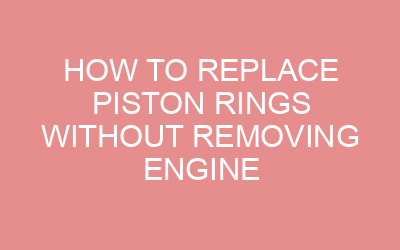
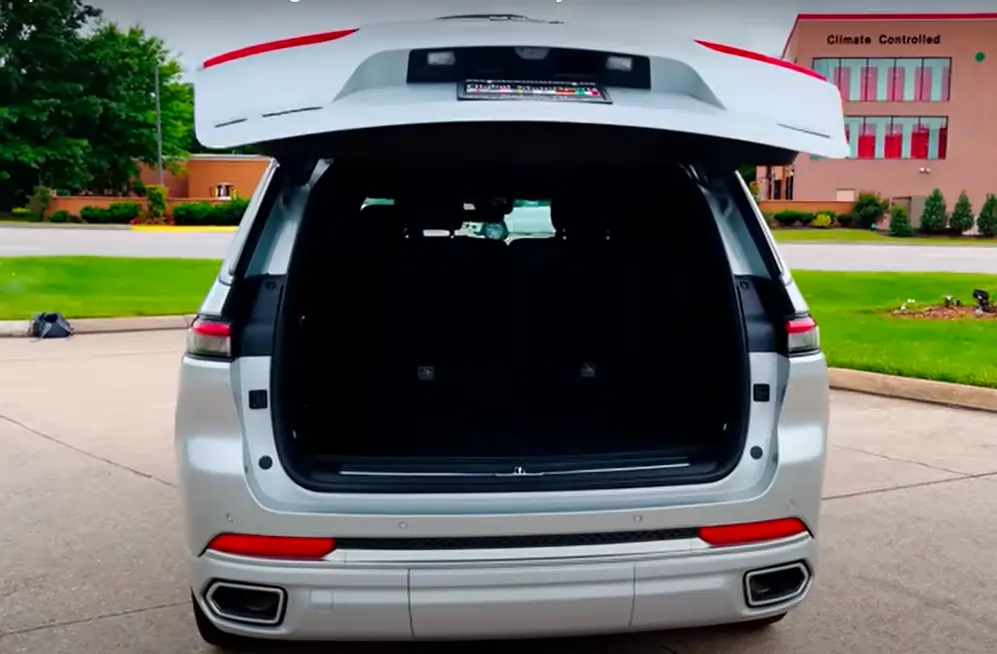


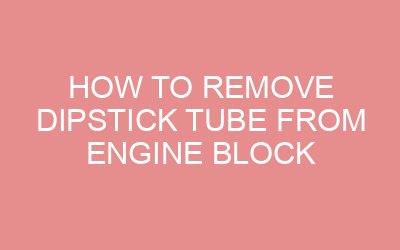
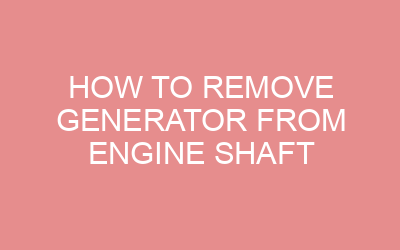
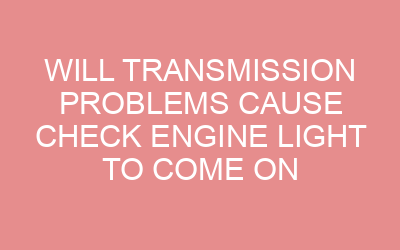
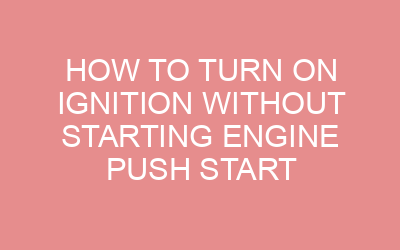

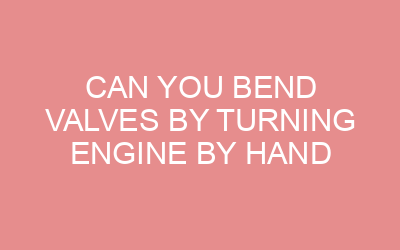


Leave a Reply